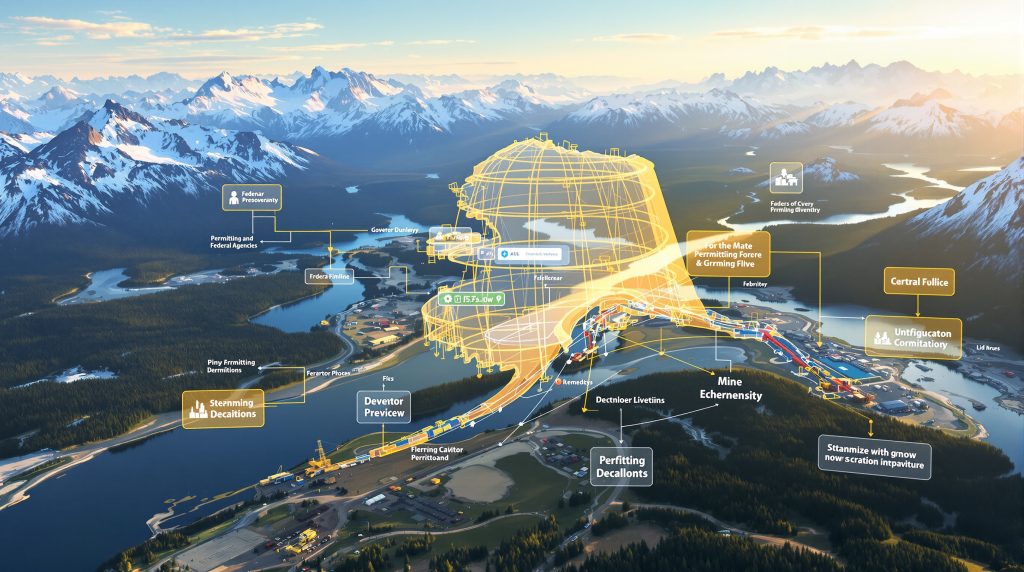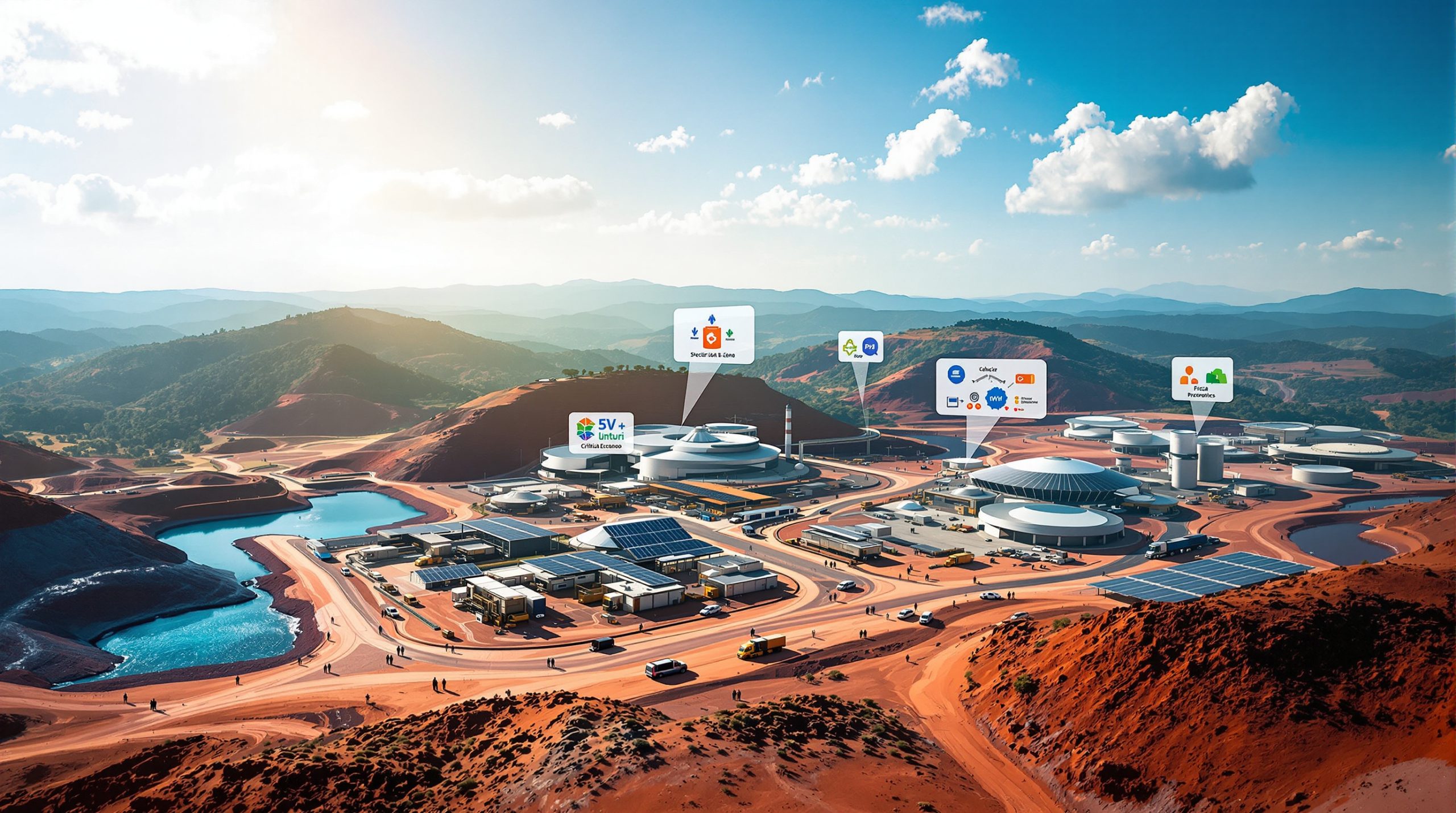Alaska's Historic Federal Permitting Agreement: What Does It Mean for Resource Development?
Alaska has made history by becoming the first state to formalize a partnership with the Federal Permitting Improvement Steering Council. This groundbreaking agreement, signed in August 2025, establishes a framework for cooperation under the Fixing America's Surface Transportation Act (FAST-41) with the goal of streamlining federal reviews for major infrastructure projects across the state.
Key Elements of the Memorandum of Understanding
The agreement creates a structured collaboration between Alaska's Department of Natural Resources and the federal permitting council. Under this arrangement, the state will identify eligible projects and coordinate with the council to engage developers and share regulatory expertise. Meanwhile, the federal council will track project timelines on the Federal Permitting Dashboard and coordinate reviews across federal agencies.
Sectors Poised to Benefit
This streamlined approach targets multiple sectors vital to Alaska's economy, including:
- Energy development
- Mining operations
- Transportation infrastructure
- Broadband expansion
- Advanced manufacturing
Why Is This Agreement Significant for Alaska's Resource Development?
First-of-Its-Kind State-Level Partnership
The memorandum of understanding represents a pioneering approach to state-federal cooperation on permitting. By establishing this formal relationship, Alaska gains unprecedented input into federal permitting processes that affect projects within its borders. This agreement builds upon recent mining permitting insights and could fundamentally change how resource projects are approved.
Addressing Historical Permitting Challenges
For decades, Alaska's resource development has faced significant hurdles due to complex and often lengthy federal permitting processes. Governor Mike Dunleavy highlighted this issue when announcing the agreement, noting that "federal bureaucracy has delayed responsible resource and infrastructure development within our state" for too long.
Creating Predictable Timelines
One of the most significant benefits of the FAST-41 process is the establishment of clear, predictable timelines for project reviews. Industry stakeholders have long cited permitting uncertainty as a major obstacle to investment in Alaska's resource sector. According to Alaska's News Source, this new agreement could potentially reduce wait times for major projects by months or even years.
How Will the Permitting Process Change Under This Agreement?
Streamlined Federal Reviews
The agreement aims to reduce redundancies in the permitting process by coordinating reviews across multiple federal agencies. This approach addresses a common complaint from project developers who previously had to navigate separate processes with different federal departments. The implementation may incorporate new executive order permits initiatives to further streamline processes.
Enhanced Transparency Through the Federal Dashboard
All projects covered under the agreement will be tracked on the Federal Permitting Dashboard, providing unprecedented transparency into the status of permits. This visibility allows stakeholders to monitor progress and hold agencies accountable for meeting established timelines.
State-Level Coordination
Alaska's Department of Natural Resources will play a central role in identifying eligible projects and facilitating communication between developers and federal agencies. This state-level coordination is expected to help tailor the permitting process to Alaska's unique environmental and economic context.
What Projects Could Benefit From the New Agreement?
Energy Infrastructure Development
Alaska's vast energy resources—including oil, natural gas, and renewable potential—could see accelerated development under the streamlined permitting process. The agreement specifically mentions energy projects as a key focus area.
Mining Operations
The state's mineral wealth, including critical minerals essential for clean energy technologies, could become more accessible with more efficient permitting timelines. Mining projects often face some of the most complex permitting requirements due to their potential environmental impacts. As the mining industry evolution continues, more efficient permitting processes will become increasingly vital.
Transportation and Connectivity Projects
Infrastructure projects like roads, bridges, and broadband expansion—critical for connecting Alaska's remote communities—stand to benefit from the coordinated approach to federal reviews.
What Are the Expected Timeframe Improvements?
Potential Reduction in Permitting Delays
While specific timeframes will vary by project, similar streamlining efforts have shown significant reductions in permitting timelines. The Federal Permitting Improvement Steering Council has reported success in reducing permitting times for major infrastructure projects in other contexts.
Maintaining Environmental Review Standards
The agreement emphasizes that streamlining does not mean circumventing environmental protections. Rather, it focuses on making existing processes more efficient while maintaining rigorous environmental standards. As reported by the Washington Examiner, officials have emphasized that environmental safeguards remain fully in place.
How Does This Agreement Align With Federal and State Priorities?
Federal Permitting Council's Perspective
Emily Domenech, Executive Director of the Federal Permitting Improvement Steering Council, emphasized that the agreement would help bring "Alaska back into the energy spotlight" and facilitate the development of the state's natural resources.
State Leadership's Vision
Governor Dunleavy positioned the agreement as aligned with a broader resource development agenda, noting that "Alaska is heavily reliant on cooperation with the federal government and its agencies" and that the FAST-41 process is "critical to shorten timelines and add certainty to permitting."
What Implementation Challenges May Arise?
Coordination Across Multiple Agencies
While the agreement establishes a framework for cooperation, successful implementation will require effective coordination across numerous federal and state agencies with different priorities and processes.
Project Eligibility Considerations
Not all projects will qualify for the streamlined process under FAST-41. Determining which projects meet the criteria for inclusion will be an important aspect of implementing the agreement.
Balancing Efficiency With Thorough Review
The challenge of maintaining thorough environmental and regulatory reviews while accelerating timelines will require careful balance and ongoing assessment. This will become particularly important as the industry moves toward data-driven operations that require different types of regulatory oversight.
What Are the Economic Implications for Alaska?
Potential Investment Attraction
More predictable permitting timelines could make Alaska more attractive to investors in resource development and infrastructure projects, potentially bringing new capital to the state. This may create numerous investment opportunities as projects move forward with greater certainty.
Job Creation Opportunities
Accelerated project approvals could lead to faster implementation of major infrastructure initiatives, creating construction and long-term operational jobs across multiple sectors.
Revenue Generation for State and Local Governments
Successful resource development projects would generate tax revenue and royalties for state and local governments, providing fiscal benefits beyond direct employment.
How Does This Compare to Other States' Approaches?
Setting a Precedent
As the first state to formalize this type of agreement with the Federal Permitting Improvement Steering Council, Alaska is establishing a potential model that other resource-rich states might follow.
Unique Aspects of Alaska's Approach
The agreement acknowledges Alaska's distinctive circumstances, including its vast federal land holdings, remote geography, and resource-dependent economy.
What's the Path Forward for Implementation?
Next Steps in the Process
The immediate next steps involve identifying priority projects that could benefit from the streamlined approach and establishing the coordination mechanisms between state and federal agencies.
Monitoring and Evaluation Mechanisms
Tracking the success of the agreement will require clear metrics on permitting timelines, project outcomes, and stakeholder satisfaction.
Potential for Expansion or Modification
As implementation proceeds, there may be opportunities to expand or modify the agreement based on lessons learned and evolving priorities.
Conclusion
Alaska signs first state-level deal to speed federal permitting represents a significant shift in how federal and state governments collaborate on permitting for major infrastructure projects. By establishing a formal framework for cooperation under FAST-41, Alaska aims to address long-standing challenges with federal permitting while maintaining environmental standards.
The success of this initiative will depend on effective implementation and coordination across multiple agencies. If successful, it could not only accelerate responsible resource development in Alaska but also serve as a model for other states seeking to streamline federal permitting processes.
As the first agreement of its kind, Alaska's partnership with the permitting council marks an important milestone in federal-state relations around infrastructure development and could significantly impact the state's economic future.
Want to Stay Ahead of Major Mineral Discoveries?
Discover how the proprietary Discovery IQ model can provide you with real-time alerts on significant ASX mineral discoveries, transforming complex data into actionable investment insights before the broader market. Explore historic returns from major discoveries and position yourself for success by visiting Discovery Alert's discoveries page today.




